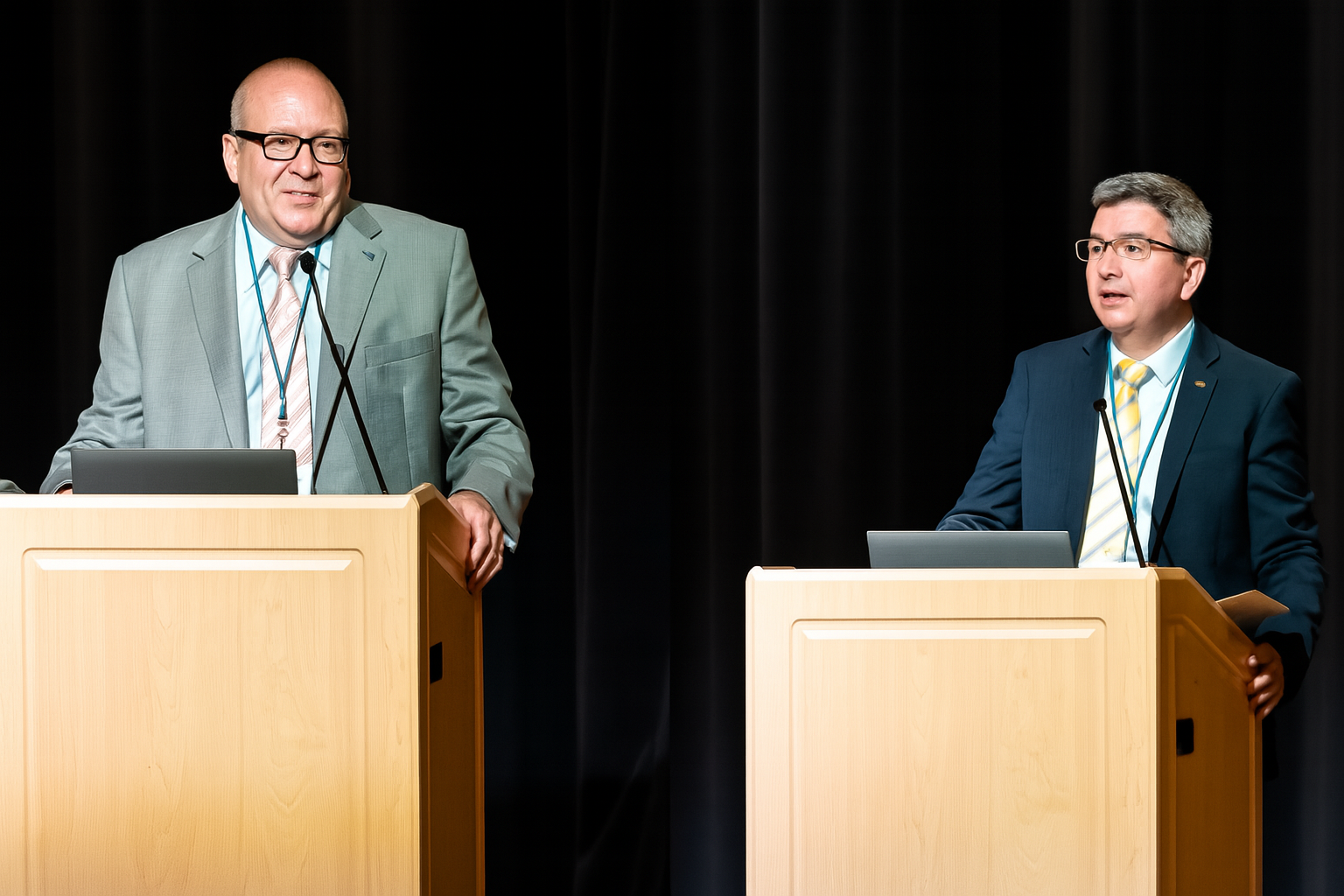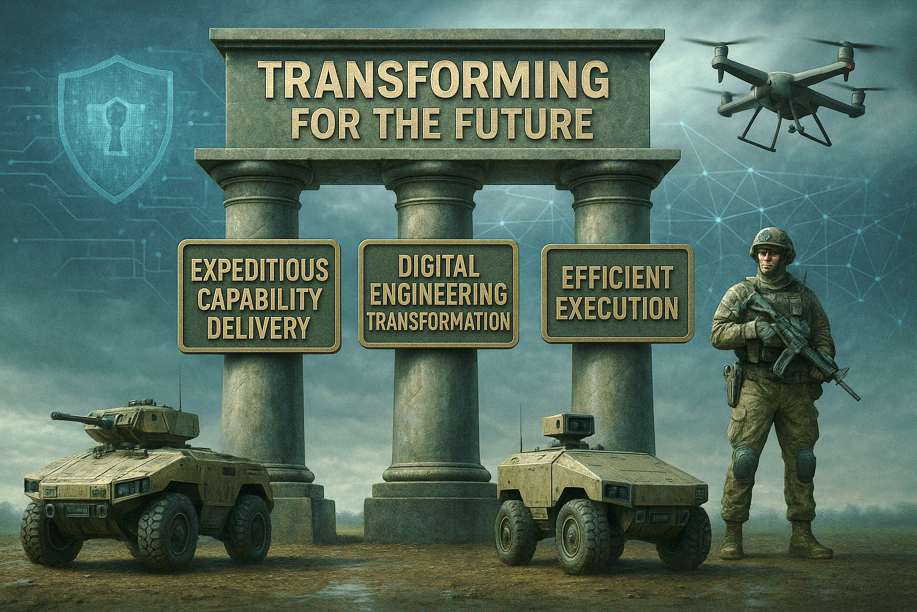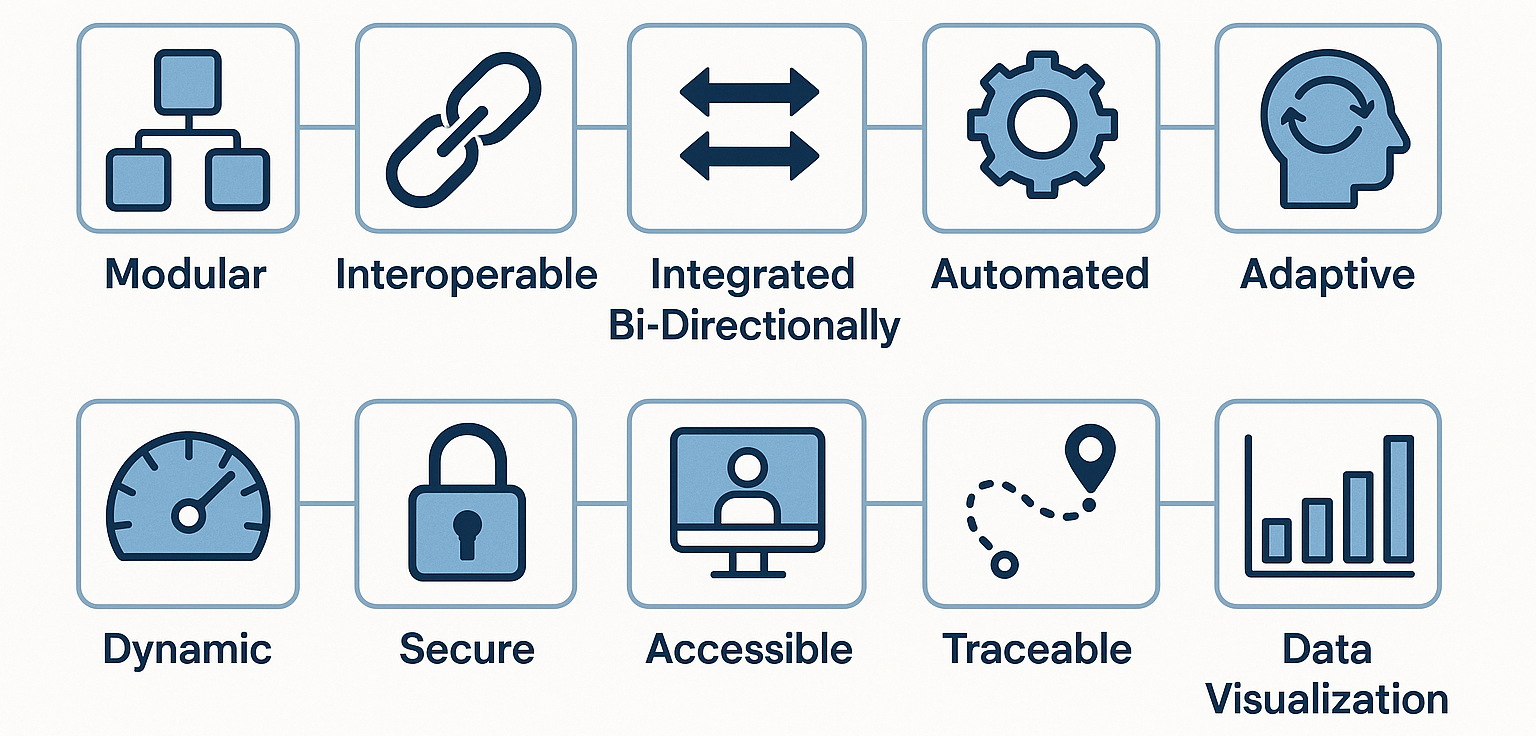Accelerating Army Transformation: The ARC and GVSC Forge a Vision for Digital Engineering Excellence

At the 2025 Annual Review of the Automotive Research Center (the ARC), leadership from the U.S. Army Ground Vehicle Systems Center (GVSC) and the ARC outlined a bold and unified vision for digital engineering (DE) as a national defense imperative. The event brought together over 250 leaders from government, industry, and academia to explore how university-based research can directly support Army readiness, autonomy, and next-generation systems.
 and Prof. Bogdan Epureanu (right) presenting the Army–Academia vision for integrated digital engineering systems at the ARC Annual Review. (Photo Credit: Melanie Reyes Photography). “)

Dr. David Gorsich, Chief Scientist of GVSC, opened with a clear message about the pace and priorities of Army modernization:
“The Army must deliver faster, optimize innovation, and think future,” he stated, emphasizing that modernization requires a complete rethink of how platforms are engineered—from design and testing to lifecycle sustainment. “We’re shifting toward bottom-up innovation, driven by experimentation and smart partnerships. That’s where the ARC and its unique testbeds come in.”
This vision aligns with the Army’s broader transformation strategy: embracing commercial technologies, eliminating obsolete systems, and integrating digital capabilities for full-spectrum lifecycle transparency. The ARC’s proximity to GVSC (under 50 miles) and its network of 15 partner universities position it as a uniquely capable engine for translating scientific discoveries into deployable technologies.
“The ARC is where fundamental science meets operational readiness,” added Prof. Bogdan Epureanu, Director of the ARC.
“Our faculty and students are tackling foundational research questions—scaling digital twins for multi-domain operations, integrating human-machine trust into design, and aligning digital outputs with battlefield effectiveness. These insights are flowing directly into the Army’s programs through our digital engineering testbed.”
Speaking with aligned purpose, Dr. Gorsich and Prof. Epureanu emphasized the deeper mission driving their collaboration:
“Our research is not just about building models—it’s about developing knowledge systems that can reason, adapt, and control physical platforms in real time,” they conveyed together. “The ARC’s Digital Engineering testbed brings this vision to life by fusing artificial intelligence, autonomy, and multi-physics modeling into a unified framework that delivers validated, mission-ready systems for the Army’s future force.”
Their presentations were accompanied by compelling visuals and testbed features that showcased the ARC’s ability to bridge fundamental science and real-world military application. From AI-driven predictive control to physics-informed digital twins, the ARC’s digital engineering ecosystem is actively shaping how the Army prototypes, validates, and deploys next-generation platforms.
The ARC has started a mission-focused digital engineering testbed designed to rapidly prototype and integrate autonomous platforms using adaptive digital twins, connected simulation environments, and real-world field data. This testbed is not theoretical—it is operational, modular, and continually refined through collaboration with Army engineers, vehicle operators, and academic researchers via DE workshops and “idea labs.” This testbed is not rigid—it will continuously evolve and grow as new modules will be created to integrate new technologies and new approaches to address new challenges and requirements.

The ARC’s Digital Engineering Testbed and Blueprint for Integration: The ARC’s digital engineering testbed is built around key principles: modular, interoperable, bi-directionally integrated, automated, adaptive, and secure. These attributes enable dynamic system development, mission-tailored control, and digital traceability across the lifecycle of ground vehicle systems. (Image Source: ARC)
The DE testbed focuses on three foundational pillars:
- Science-Driven Foundation: Advancing core research in autonomy, AI control, and multi-physics modeling.
- Testbed-Enabled Integration: Validating theoretical advances through physical experimentation and digital replication.
- Mission-Relevant Deployment: Enabling robust performance in contested terrain, unpredictable logistics, and modular operational environments.
This fusion of computation and experimentation empowers the ARC to serve as a national hub for Digital Engineering innovation—fully aligned with the DoD Digital Engineering Strategy and the 5000 Series Adaptive Acquisition Framework.
As the ARC continues to develop interoperable, scalable systems for autonomous off-road and ground vehicle operations, it extends a clear invitation to industry, military, and academic partners alike: Bring your toughest problems and boldest ideas—because the ARC is ready to co-develop the future.

